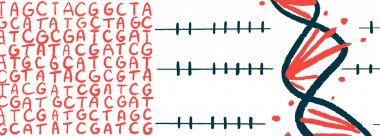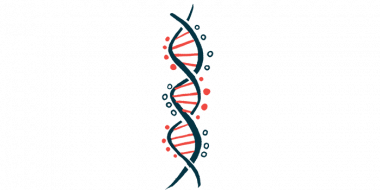 SMA and Genetics Spinal muscular atrophy (SMA) is a rare genetic condition characterized by the progressive loss of motor neurons, the specialized nerve cells that control voluntary movement, leading to muscle weakness and wasting. Nearly all (95%) cases of the most common forms of SMA (types 0, 1, 2, 3, and 4) are caused by the complete loss of exon 7 in both copies of the SMN1 gene. This gene provides the instructions to produce survival motor neuron (SMN), a protein generated by virtually every cell in the body and involved in several cellular processes regulating protein balance. Exons are the sections of a gene that contain instructions for protein production. As a result of mutations in the SMN1 gene, little or no SMN protein is made. Notably, while increasing evidence suggests that SMA is a whole-body disease, motor neurons appear to be highly sensitive to SMN deficiency, dying without it. Their loss results in the progressive muscle weakness and atrophy that marks SMA. While a second SMN gene, called SMN2, is capable of producing SMN, a slight difference in its DNA sequence limits the amount of functional SMN it produces to 10–15%. Typically, people have two SMN2 gene copies, and extra copies can help provide more SMN protein, with a higher number of copies being associated with less severe disease. Other rarer types of SMA caused by mutations in genes other than SMN1 do exist. These include: SMA with respiratory distress 1, SMA with progressive myoclonic epilepsy, Finkel type SMA, SMA with lower extremity predominance, Kennedy’s disease, and X-linked infantile SMA. |
|---|
 Did You Know? SMA has a wide spectrum of severity that is mostly explained by differences in the number of copies of the backup gene, SMN2. However, up to 40% of the variability in disease severity is not associated with the number of SMN2 copies. Possible factors may be genes that produce proteins that directly interact with the SMN protein or are connected to its proper function. However, a recent study found that mutations in four of these genes — FUS, TDP-43, PFN2, and PLS3 — could not explain the range of SMA severity. Scientists are continuing to investigate this phenomenon. |
|---|
 Did You Know? In 2019, scientists reported that they had created a new method to calculate the number of SMN1 gene copies present in individuals and identify possible SMA carriers. The new method is highly sensitive, specific, inexpensive, and easy to perform. According to the team, this new tool has the potential to advance genetic screening technology for SMA. |
|---|


Genetic testing is one of the most accurate ways of diagnosing SMA. It involves taking a blood sample from the patient and checking for known mutations associated with this disorder.
Prenatal Testing
Prenatal screening for SMA is not standard, although this is changing as disease-modifying treatments are coming into practice.
If an expectant couple know that they are carriers, they may request prenatal screening to learn whether their unborn child has inherited the disease. It is recommended that people considering prenatal screening first speak with a genetic counselor to ensure they fully understand the potential results and their ramifications. One of two procedures may be used to obtain a sample for testing: chorionic villus sampling (CVS) or amniocentesis.
CVS may be performed as early as the 10th week of pregnancy but is normally carried out between weeks 11 and 14. It involves removing cells from inside the placenta that contain the fetus’ DNA. This is done by either inserting a needle through the abdomen or by inserting a catheter through the cervix.
Amniocentesis cannot be performed until later in the pregnancy, after week 15. A needle is inserted through the abdomen to take a small sample of amniotic fluid, the liquid that fills the placenta and surrounds the fetus.
Both procedures may be uncomfortable but are generally low risk. In fewer than 1% of cases, they may result in a miscarriage.
Newborn Screening
Newborn screening can help identify the existence of disease before symptoms begin, enabling early treatment. This is thought to help improve a patient’s outcomes.
SMA is now part of the Recommended Uniform Screening Panel for newborns in the United States, and screening can be carried out alongside standard tests for other conditions. But each state decides if SMA will be included in its screening panel, along with standard tests for other conditions.

 Did You Know? In June 2021, Texas became the 37th state to include SMA as part of its standard newborn screening panel. Massachusetts was one of the first states to offer the screening in January 2018, six months before SMA was added to the U.S. Recommended Uniform Screening Panel for newborns. As of mid-2022, 47 states screen for SMA. |
|---|
 Did You Know? Early diagnosis of SMA is crucial both for genetic counseling and to guide treatment, which should be initiated as soon as possible to ensure better outcomes. However, a 2020 study found that, despite the common clinical features of SMA and the ease of genetic testing, delays in diagnosing SMA are still evident, particularly for those with SMA type 3. According to the researchers, more attention should be focused on how to reduce this diagnostic delay so patients can benefit from early treatment. |
|---|
“When I was born, my parents weren’t yet aware of my genetic composition. They didn’t know it yielded a disease that would forever alter my physical ability to engage in life’s common landmarks the way most parents envision for their children. Another 32 years would pass before SMA was added by the U.S. Secretary of Health and Human Services to the Recommended Uniform Screening Panel for newborn screening. Now, the majority of U.S. states have prioritized SMA within prenatal screening efforts to identify its presence and offer treatment options to expecting parents.”-Katie Napiwocki, columnist, “A Wildflower in the Wheelderness” |
|---|

